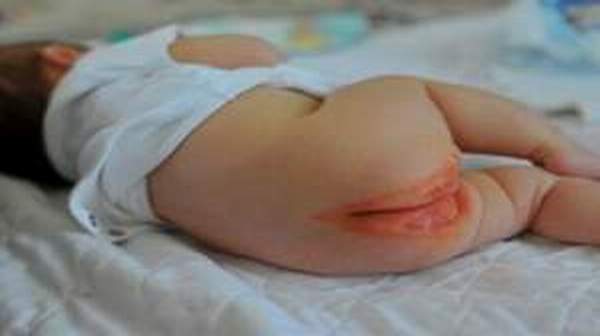What's in this article?
What is Diaper Rash?
Diaper rash is a very common condition that can cause a baby’s skin to become sore, red, and tender. The rash usually occurs because the skin is irritated by soiled diapers that are left on for too long; friction from the diaper; or certain brands of detergent, soaps, or baby wipes on sensitive skin. The plastic that prevents diapers from leaking also prevents air circulation, thus creating a warm, moist environment where rashes and fungi can thrive.
Diaper rash is a common form of inflamed skin (dermatitis) that appears as a patchwork of bright red skin on your baby’s bottom.
Diaper rash is commonly linked to continuously wet or infrequently changed diapers, diarrhea, and using plastic pants to cover diapers. Diaper rash also may develop after solid foods are added to your baby’s diet, when breast-feeding mothers eat certain foods or when your baby is taking antibiotics.
Diaper rash can alarm parents and annoy babies, but most diaper rash cases can be resolved with simple at-home treatments.
Diaper Rash facts
♦ Diaper rash is very common in babies and is not a sign of parental neglect.
♦ Diaper rash is most commonly a kind of contact dermatitis.
♦ Diaper rash may become secondarily infected by bacteria or yeast normally present on the skin. In this case, topical antibiotic ointments provide a rapid and effective therapy.
♦ Avoidance of skin irritants by frequent diaper changing provides the number-one preventative measure.
♦ Effective treatments include frequent diaper changes, application of topical barriers (for example, petroleum jelly), and rarely topical antibiotic/antifungal ointments, or low-potency hydrocortisone cream. High-potency steroid creams, powders, and concentrated baking-soda/boric-acid baths and neomycin-containing ointments are to be avoided.
Causes Diaper Rash
There are several categories of causes for this dermatitis. First and foremost is “irritant” or “contact” dermatitis. Skin involvement may vary from mild redness (similar in character to a sunburn) to erosion of the top layers of skin. A characteristic differential point of contract diaper dermatitis from other causes of diaper rash is that it rarely involves the skin fold regions therefore, it spares areas not in contact with urine/stool.
Symptoms of Diaper Rash
Diaper rash is characterized by the following:
♦ Skin signs. Diaper rash is marked by red, puffy and tender-looking skin in the diaper region buttocks, thighs and genitals.
♦ Changes in your baby’s disposition. You may notice your baby seems more uncomfortable than usual, especially during diaper changes. A baby with a diaper rash often fusses or cries when the diaper area is washed or touched.
Diaper rashes can occur intermittently, anytime your child wears diapers, but they’re more common in babies during their first 15 months, especially between 9 and 12 months of age.
Diaper Rash Treatment
Take these steps to heal your child’s skin when you see a diaper rash:
♦ Keep your child clean and dry by changing his diaper frequently. That may mean getting him up at night for a diaper change
♦ Rinse his diaper area well at each diaper change. Don’t use wipes that contain alcohol or fragrance. Some parents keep cotton balls and a squirt bottle or an insulated container of warm water at the changing table for easy, gentle cleanups.
♦ Pat your child’s skin dry don’t rub!
♦ Use an ointment that forms a protective barrier on the skin after every diaper change to help protect your child’s irritated skin from stool and urine. There are several good barrier ointments on the market, including petroleum ointment or petroleum jelly, nonpetroleum jelly, lanolin products, and white zinc oxide.
♦ Put your child’s diaper on loosely or use a diaper that’s a little big on him to allow for better air circulation. If you buy disposables, try a different brand to see if that helps.There are varieties for sensitive skin, for example, and extra-absorbent options will pull more moisture away from your child’s skin.
♦ When the weather is warm and your child can play outside or in a room with a floor that’s easy to clean, leave his diaper (and ointment) off for as long as possible every day. Exposure to the air will speed healing.
♦ Consider letting your child sleep with a bare bottom whenever he has a rash. A plastic sheet under the cloth one will help protect the mattress.





